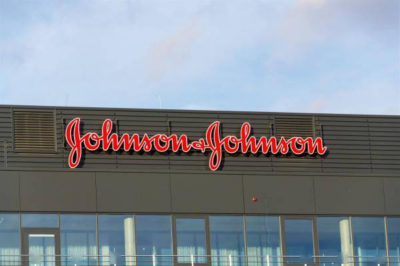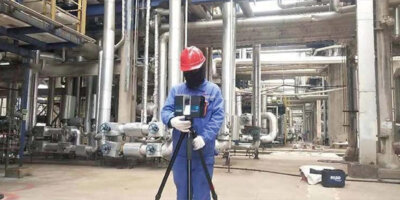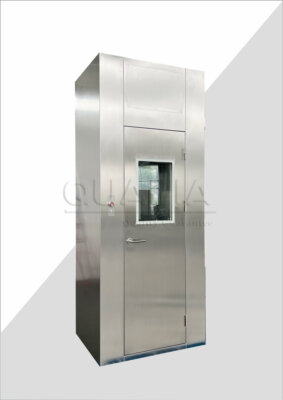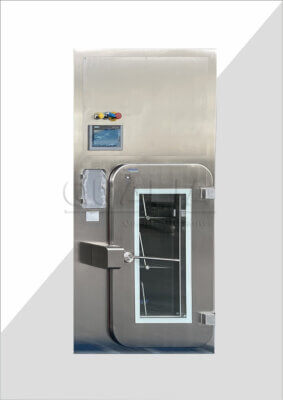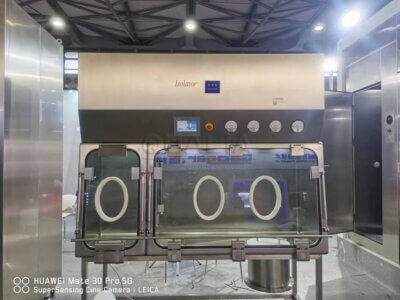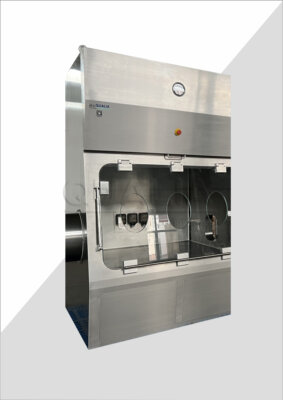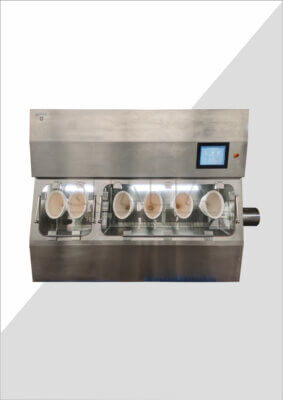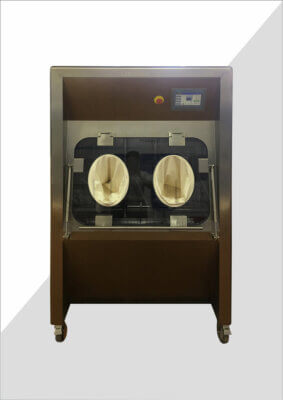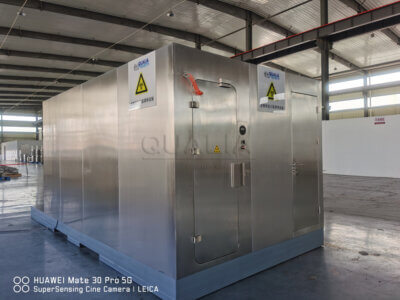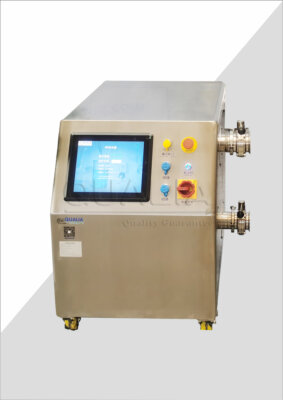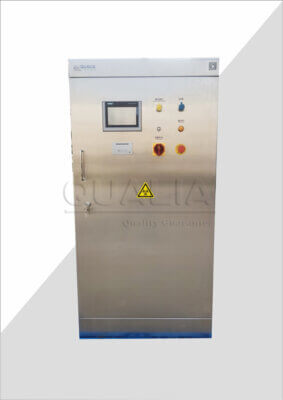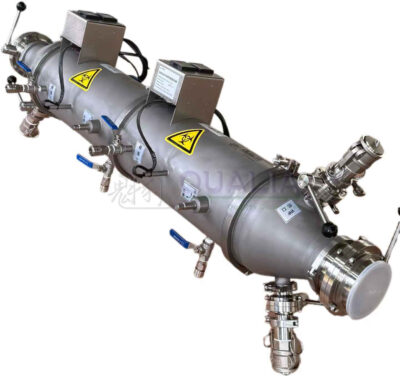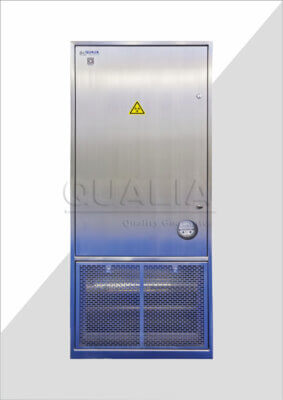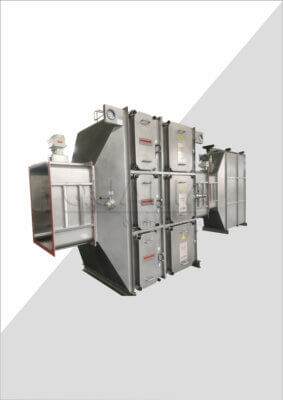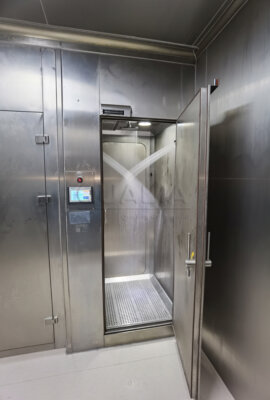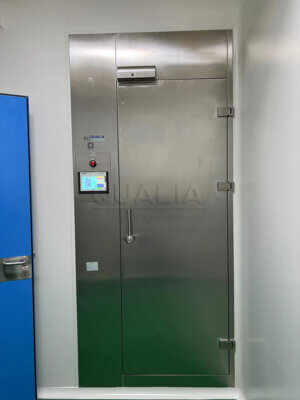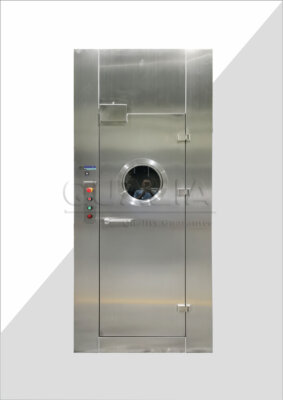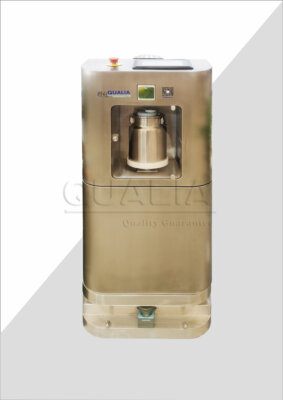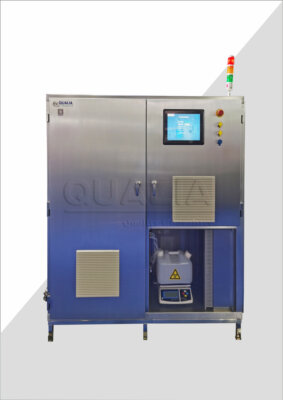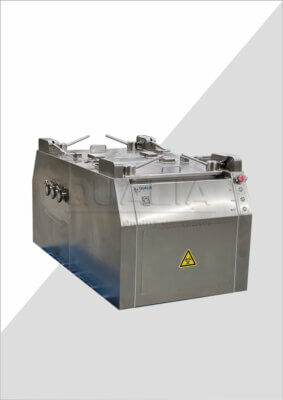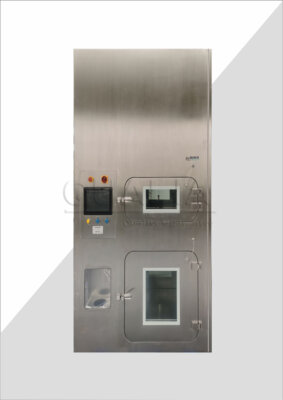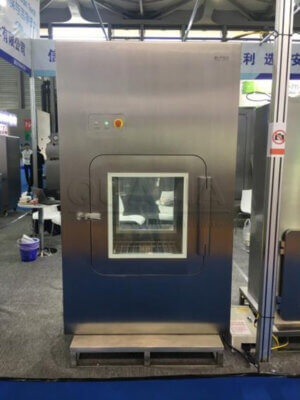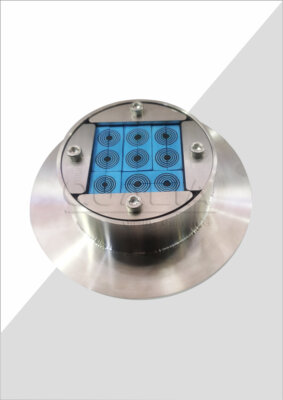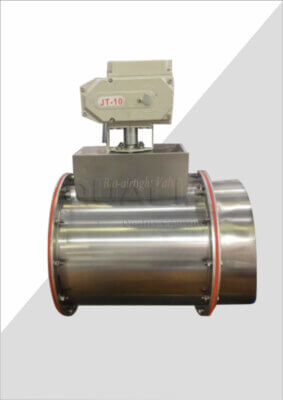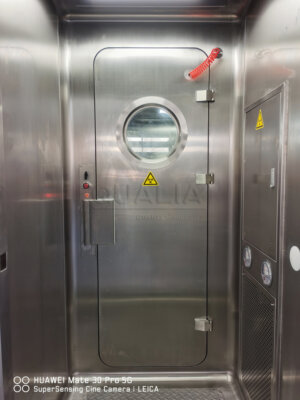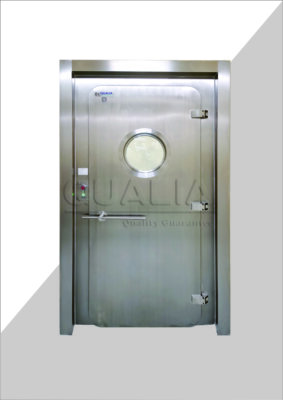In today’s precision-driven industries, maintaining controlled environments has become a critical challenge that can make or break operational success. Whether you’re managing a pharmaceutical laboratory, semiconductor manufacturing facility, or biocontainment research center, even the smallest breach in environmental control can lead to contamination, product loss, and regulatory compliance failures. Traditional door sealing systems often fall short when absolute isolation is required, leaving facilities vulnerable to pressure fluctuations, particle infiltration, and cross-contamination between critical zones.
The consequences of inadequate sealing can be devastating. A single contamination event can cost pharmaceutical companies millions in lost batches, while semiconductor manufacturers face yield losses that directly impact profitability. Research facilities risk compromising years of work, and healthcare environments may face serious safety concerns. The urgency for reliable, automated sealing solutions has never been greater.
APR door pneumatic seals represent a sophisticated solution to these challenges, offering automated, consistent, and highly effective environmental isolation. This comprehensive guide explores how these advanced sealing systems work, their key benefits, and practical applications across various industries. You’ll discover the technical mechanisms that make pneumatic sealing superior to traditional methods, understand the specific advantages for different applications, and learn how to select the optimal configuration for your facility’s unique requirements.
What Are APR Door Pneumatic Seals?
APR (Automatic Pneumatic Release) door pneumatic seals are sophisticated containment systems designed to create hermetic barriers between controlled environments through automated pneumatic activation. QUALIA Bio-Tech has pioneered these systems to address the growing need for reliable, hands-free environmental isolation in critical applications. Unlike traditional mechanical seals that rely on manual activation or simple compression, these systems utilize pressurized air to achieve consistent, repeatable sealing performance.
The fundamental principle behind pneumatic apr door technology involves using controlled air pressure to activate sealing components that create an airtight barrier around the door perimeter. This automation eliminates human error while ensuring uniform sealing pressure across the entire door frame, resulting in superior containment performance compared to conventional sealing methods.
Basic Components and Design
The core architecture of APR door pneumatic seals consists of several integrated components working in harmony. The primary sealing element typically features an inflatable gasket system embedded within the door frame, connected to a pneumatic control unit that manages air pressure and timing sequences. Control valves regulate the inflation and deflation cycles, while pressure sensors monitor system performance to ensure optimal sealing force.
Modern systems incorporate advanced materials such as specialized elastomers and thermoplastic compounds that maintain flexibility across temperature ranges while resisting chemical degradation. The pneumatic actuators are designed for rapid response times, typically achieving full seal activation within 2-3 seconds of receiving the control signal. This quick response is crucial in applications where immediate isolation is required.
| Component | Function | Typical Specifications |
|---|---|---|
| Inflatable Gasket | Primary sealing barrier | 15-45 PSI operating pressure |
| Pneumatic Controller | System automation | 0.5-2 second response time |
| Pressure Sensors | Performance monitoring | ±2% accuracy range |
| Control Valves | Air flow regulation | 1/4″ to 1/2″ port sizes |
Types of APR Door Configurations
APR door systems are available in multiple configurations to accommodate different architectural requirements and performance specifications. Single-seal configurations provide basic containment suitable for standard laboratory applications, while double-seal systems offer enhanced protection for high-risk environments where redundancy is essential.
Progressive seal designs incorporate multiple sealing stages that activate sequentially, creating graduated pressure zones that minimize stress on the door structure while maximizing sealing effectiveness. These systems are particularly valuable in applications where large doors or extreme pressure differentials are involved.
The choice between bottom-seal, perimeter-seal, or hybrid configurations depends on specific application requirements. Bottom-seal systems excel in applications where floor-level containment is critical, while perimeter seals provide comprehensive isolation for general containment applications. Hybrid systems combine multiple sealing approaches to address complex geometric challenges or extreme performance requirements.
How Do APR Door Pneumatic Seals Work?
The operational mechanism of apr door seal systems relies on precisely controlled pneumatic activation that transforms a standard door into a hermetic barrier. When the sealing sequence initiates, the control system first verifies door position and environmental conditions before beginning the pressurization cycle. This verification step prevents seal activation on improperly positioned doors, protecting both the sealing system and surrounding infrastructure.
The pneumatic activation process involves multiple stages designed to optimize sealing performance while minimizing mechanical stress. Initial pressurization occurs at approximately 30% of target pressure, allowing the sealing elements to position themselves correctly against the door surfaces. This gradual approach prevents seal damage and ensures uniform contact distribution across the entire sealing perimeter.
Pneumatic Activation Process
During the primary activation phase, compressed air flows through precision-engineered channels within the door frame, inflating the sealing gaskets to their operational pressure. Advanced systems incorporate pressure ramping algorithms that gradually increase sealing force over a 1-2 second period, preventing shock loads that could damage door hardware or compromise seal integrity.
The control system continuously monitors sealing pressure throughout the activation cycle, automatically adjusting air flow to maintain optimal performance. Industry research indicates that consistent sealing pressure is crucial for long-term reliability, with pressure variations exceeding ±5% significantly reducing seal life expectancy.
Modern pneumatic door sealing systems include intelligent diagnostics that detect potential issues before they impact performance. These systems can identify gradual pressure loss, indicating seal wear or damage, and alert maintenance personnel to address problems proactively. This predictive maintenance capability is essential for maintaining continuous operation in critical environments.
Sealing Mechanism and Performance
The sealing mechanism achieves containment through controlled deformation of specialized elastomeric materials against machined sealing surfaces. When pressurized, the pneumatic seals expand to fill irregularities in the door frame geometry, creating a continuous barrier that prevents air infiltration and particle migration.
Performance characteristics vary based on seal design and application requirements. Standard configurations typically achieve leak rates below 0.1 CFM at 0.5″ W.C. pressure differential, while high-performance systems can achieve leak rates as low as 0.01 CFM under similar conditions. These performance levels exceed most traditional sealing methods by factors of 10-100x.
The sealing force distribution plays a crucial role in overall system effectiveness. Pneumatic seals naturally distribute sealing pressure more evenly than mechanical alternatives, reducing stress concentrations that can lead to premature wear. This uniform pressure distribution also improves sealing consistency across the entire door perimeter, eliminating weak points that could compromise containment integrity.
| Performance Metric | Standard Systems | High-Performance Systems |
|---|---|---|
| Leak Rate | <0.1 CFM @ 0.5″ W.C. | <0.01 CFM @ 0.5″ W.C. |
| Activation Time | 2-3 seconds | 1-2 seconds |
| Pressure Range | 15-30 PSI | 20-45 PSI |
| Cycle Life | 500,000+ cycles | 1,000,000+ cycles |
What Are the Key Benefits of Pneumatic APR Door Technology?
The advantages of apr door pneumatic seals extend far beyond simple containment, offering operational benefits that transform facility management and safety protocols. Automation eliminates the variability inherent in manual sealing processes, ensuring consistent performance regardless of operator training or experience level. This consistency is particularly valuable in regulated industries where documentation and repeatability are essential for compliance.
Energy efficiency represents another significant advantage, as pneumatic systems consume power only during activation and deactivation cycles. Once sealed, the system maintains pressure without continuous energy input, unlike some electronic alternatives that require constant power consumption. This efficiency translates to reduced operating costs and improved environmental sustainability.
Enhanced Contamination Control
The superior sealing performance of pneumatic APR doors provides exceptional contamination control that exceeds traditional methods. The uniform pressure distribution creates a more effective barrier against particle infiltration, while the automated activation eliminates human contact that could introduce contaminants during the sealing process.
In our experience working with pharmaceutical manufacturers, facilities using pneumatic APR door systems report 85-95% reduction in cross-contamination incidents compared to manual sealing methods. This improvement directly impacts product quality, regulatory compliance, and operational efficiency. The consistent sealing pressure also maintains effectiveness across varying environmental conditions, providing reliable performance despite temperature and humidity fluctuations.
The rapid activation capability enables dynamic containment strategies where sealing can be triggered automatically based on environmental monitoring or process conditions. This responsive approach to contamination control allows facilities to implement sophisticated protection protocols that adapt to changing operational requirements.
Operational Efficiency Advantages
Pneumatic APR door systems significantly reduce the time required for room transitions and cleaning protocols. Traditional sealing methods often require manual verification and adjustment, consuming valuable time during process changeovers. Automated pneumatic systems eliminate these delays while providing immediate confirmation of sealing effectiveness through integrated monitoring systems.
Maintenance requirements are substantially reduced compared to mechanical sealing alternatives. The pneumatic design minimizes moving parts subject to wear, while the controlled activation stresses reduce fatigue-related failures. Industry data suggests that properly maintained pneumatic seal systems achieve 3-5 times longer service life than mechanical alternatives, translating to reduced replacement costs and improved operational continuity.
However, it’s important to note that pneumatic systems require reliable compressed air supply and backup systems for critical applications. The initial installation cost is typically 15-25% higher than mechanical alternatives, though this investment is usually recovered through improved operational efficiency and reduced maintenance costs within 2-3 years.
What Industries Use APR Door Seal Systems?
The versatility of pneumatic apr door technology has led to adoption across numerous industries where environmental control is critical. Pharmaceutical and biotechnology facilities represent the largest application segment, driven by stringent regulatory requirements and the high cost of contamination events. These facilities utilize APR door systems to maintain sterile manufacturing environments and protect sensitive biological materials.
Semiconductor manufacturing facilities increasingly rely on pneumatic sealing to maintain the ultra-clean environments required for modern chip production. Even microscopic contamination can destroy entire production runs, making reliable sealing systems essential for maintaining yield rates and profitability. The precise control offered by pneumatic systems aligns perfectly with the exacting requirements of semiconductor fabrication.
Laboratory and Research Applications
Research laboratories, particularly those handling hazardous materials or conducting sensitive experiments, benefit significantly from the containment capabilities of pneumatic APR doors. The automated sealing provides consistent protection for personnel while maintaining the controlled environments necessary for reproducible research results.
A major university research facility recently implemented pneumatic APR door systems in their biosafety level 3 laboratories, achieving 99.8% containment effectiveness during emergency scenarios. The rapid sealing capability proved crucial during simulated containment breaches, demonstrating the system’s value for high-risk research applications.
The flexibility of pneumatic systems allows customization for specific research requirements, including integration with building automation systems and emergency response protocols. This adaptability makes them suitable for diverse research environments, from basic chemistry labs to specialized containment facilities.
Manufacturing and Clean Room Environments
Clean room manufacturing environments across industries including aerospace, medical devices, and electronics assembly utilize pneumatic APR doors to maintain critical cleanliness standards. The automated operation reduces human intervention that could introduce contaminants, while the superior sealing performance maintains pressure differentials essential for proper clean room function.
Food and beverage manufacturers increasingly recognize the value of pneumatic sealing for maintaining hygienic processing environments. The systems provide reliable barriers against airborne contaminants while facilitating the frequent cleaning and sanitization required in food production facilities.
| Industry Sector | Primary Application | Key Performance Requirement |
|---|---|---|
| Pharmaceutical | Sterile manufacturing | <0.01 CFM leak rate |
| Semiconductor | Clean room isolation | Particle containment |
| Research Labs | Biosafety containment | Emergency sealing capability |
| Food Processing | Hygienic barriers | Easy sanitization |
How to Choose the Right APR Door Seal Configuration?
Selecting the optimal apr door seal mechanism requires careful evaluation of multiple factors including environmental conditions, performance requirements, and operational constraints. The decision process should begin with a comprehensive assessment of containment objectives, including required leak rates, pressure differentials, and response time specifications.
Door geometry and structural considerations significantly impact system selection. Large doors or unusual configurations may require specialized seal designs or multiple sealing zones to achieve optimal performance. The door material and frame construction also influence seal selection, as different materials require specific sealing approaches to ensure long-term reliability.
Performance Specifications to Consider
Critical performance parameters include leak rate requirements, activation speed, and cycle life expectations. High-containment applications may require leak rates below 0.01 CFM, necessitating premium seal designs and precision manufacturing. Standard applications typically achieve adequate performance with leak rates in the 0.05-0.1 CFM range, allowing more cost-effective seal configurations.
Pressure differential requirements directly impact seal design and pneumatic system specifications. Applications requiring containment against significant pressure differentials need enhanced seal geometries and higher activation pressures. Environmental conditions including temperature extremes, chemical exposure, and humidity variations must be considered when selecting seal materials and control system components.
The operational cycle frequency influences seal selection and maintenance requirements. High-frequency applications benefit from enhanced seal designs optimized for extended cycle life, while occasional-use applications may prioritize cost-effectiveness over maximum durability.
Installation and Maintenance Requirements
Installation complexity varies significantly based on door configuration and facility requirements. Retrofit installations in existing facilities often present challenges related to structural modifications and utility access. New construction projects offer greater flexibility for optimizing system design and integration.
Maintenance accessibility should be evaluated during system selection, as some configurations require specialized tools or extensive disassembly for service. The availability of local service support and spare parts inventory affects long-term operational costs and system reliability.
While pneumatic APR door systems offer superior performance, they do require more complex installation procedures compared to simple mechanical seals. The pneumatic control systems need regular calibration and filter replacement to maintain optimal performance, adding to operational complexity.
Conclusion
APR door pneumatic seals represent a significant advancement in environmental containment technology, offering automated, consistent, and highly effective isolation for critical applications. The key advantages include superior sealing performance with leak rates 10-100 times lower than traditional methods, automated operation that eliminates human error, and enhanced contamination control that directly impacts product quality and safety.
The pneumatic door sealing technology provides particular value in pharmaceutical manufacturing, semiconductor fabrication, research laboratories, and clean room environments where environmental control is paramount. The systems’ ability to achieve rapid activation, maintain consistent performance across varying conditions, and integrate with building automation systems makes them ideal for modern facility management approaches.
When selecting APR door seal systems, prioritize performance specifications that align with your containment objectives while considering installation complexity and maintenance requirements. The initial investment in pneumatic sealing technology typically provides returns through improved operational efficiency, reduced contamination incidents, and enhanced regulatory compliance within 2-3 years.
Looking forward, advancing pneumatic control technology and smart system integration will continue expanding the capabilities and applications of APR door seals. The growing emphasis on automated facility management and enhanced safety protocols positions these systems as essential infrastructure for next-generation controlled environments.
For facilities requiring reliable, automated containment solutions, advanced pneumatic APR door systems offer the performance, reliability, and operational benefits necessary to meet today’s demanding environmental control requirements. What specific containment challenges does your facility face that could benefit from pneumatic sealing technology?
Frequently Asked Questions
Q: What are APR door pneumatic seals and how do they work?
A: APR door pneumatic seals are inflatable seals installed around the perimeter of APR doors used in high-containment environments such as biosafety labs and cleanrooms. They work by inflating with compressed air to press tightly against the doorframe, creating an airtight barrier that prevents air leakage even under pressure differences. This inflation quickly follows door closure, ensuring effective sealing that adapts to minor frame irregularities. The seal deflates when the door needs to be opened, enabling smooth access. This system provides superior containment compared to mechanical seals, especially in high-traffic or wheeled equipment areas.
Q: Why are pneumatic seals preferred over mechanical seals for APR doors?
A: Pneumatic seals are often preferred because they offer a flush threshold with the floor, eliminating trip hazards common with mechanical seal doors that have raised thresholds. They provide faster, more reliable airtight sealing by inflating to conform precisely to the doorframe, accommodating minor warping or wear over time. Additionally, pneumatic systems include features like automatic inflation/deflation, pressure monitoring, and emergency deflation valves for safety. These qualities make them ideal for environments requiring stringent containment such as BSL3 and BSL4 laboratories or pharmaceutical cleanrooms.
Q: What materials and components are used in APR door pneumatic seals?
A: APR door pneumatic seals typically feature:
- Door frames and leaves made from stainless steel, powder-coated steel, aluminum, or phenolic resin for durability and chemical resistance.
- Inflatable seal strips made from high-density EPDM (ethylene-propylene-diene monomer) rubber, designed to be resilient and airtight.
- Compressed air systems (often medical-grade) to inflate the seals quickly during door closure.
- Control systems for door status and air pressure alarms.
- Emergency deflation valves for safety during power outages.
These components work together to ensure a reliable, airtight containment solution.
Q: In what types of facilities are APR door pneumatic seals typically used?
A: APR door pneumatic seals are commonly found in high-containment and contamination-sensitive facilities such as:
- Biosafety level laboratories (BSL3, BSL4, and agricultural variants)
- Pharmaceutical manufacturing and research labs
- Medical cleanrooms and hospitals
- Any environment where airtight containment and frequent traffic, including wheeled carts or large animals, require both safety and ease of access
Their airtight integrity supports critical processes like decontamination, fumigation, and sterile production.
Q: How does the inflation and deflation process work in pneumatic seals?
A: The inflation and deflation cycles of pneumatic seals are typically fast and automated:
- Upon door closure, compressed air inflates the seal within about 5 seconds, pressing it firmly against the door frame to ensure airtight containment.
- If the internal pressure rises too high, an automatic deflation feature prevents damage by releasing excess pressure.
- When the door is opened, the seal deflates within around 5 seconds, allowing easy passage.
- Emergency deflation valves exist to quickly release air manually during power failures or emergencies, ensuring safe exit.
This system allows a controlled and consistent seal crucial for containment.
Q: Can APR door pneumatic seals be used with multiple doors or interlocking systems?
A: Yes, pneumatic seals on APR doors can be configured individually or in multiple combinations, including interlocking door systems. These setups allow controlled airlocks or containment zones with sequential sealing, enhancing safety and containment in high-security or contamination-sensitive environments. Interlocks and electromagnetic handles can be integrated to coordinate door operation and maintain airtight integrity across adjoining areas. This versatility supports complex layouts typical in advanced labs and pharmaceutical facilities.
External Resources
- Pneumatic Seal APR Doors – BioSafe Tech by QUALIA – Explains the working principle and technical features of APR door pneumatic seals, including inflation mechanics, materials used, and safety functions for high containment environments.
- Pneumatic Seal APR Doors | Presray – Details the application of pneumatic seal APR doors in laboratories and cleanrooms, outlining how inflated seals provide airtight containment and the scenarios in which they are used.
- Revolutionizing Door Technology: QUALIA’s Pneumatic Seal APR Doors – Offers an in-depth overview of the mechanics, safety features, and materials behind QUALIA’s pneumatic seal APR doors, including maintenance advantages and integration options.
- How air seals work | Processing Magazine – Provides a technical overview of how pneumatic air seals function by using pressurized air to create a sealing barrier, relevant for understanding the underlying principle of APR door pneumatic seals.
- Pneumatic Seal APR Doors & Mechanical Seal APR Doors – Youth – Compares pneumatic and mechanical seal systems in airtight doors, describing how pneumatic inflation creates a tight seal and the differences from mechanical alternatives.
- APR Doors | Cleanroom World – Discusses the purpose, features, and benefits of APR doors with pneumatic seals in high-containment environments, emphasizing their role in laboratory and pharmaceutical facility safety.
Related Contents:
- Pneumatic Seal APR Doors: Complete Guide to Industrial Applications
- Pneumatic vs. Electric Bio-safety Isolation Dampers
- BSL-3 Airlocks: Door Specs for Lab Security
- Advanced Sealing Technologies Expert Insights
- Revolutionizing Door Technology: QUALIA’s Pneumatic Seal APR Doors
- Bio-safety Dampers for Virology Lab Containment
- How to Install a Bio-safety Isolation Damper: 7 Steps
- Revolutionizing Door Technology: QUALIA’s Pneumatic Seal APR Doors
- Essential BIBO System Maintenance Checklist

